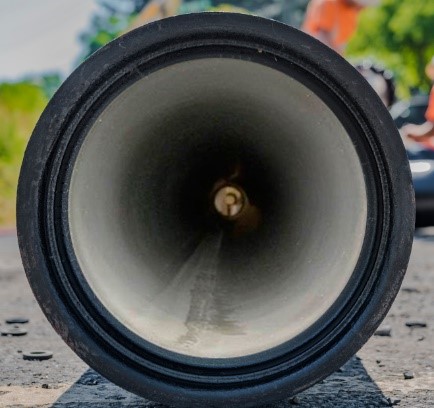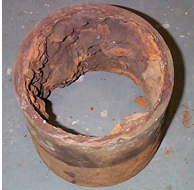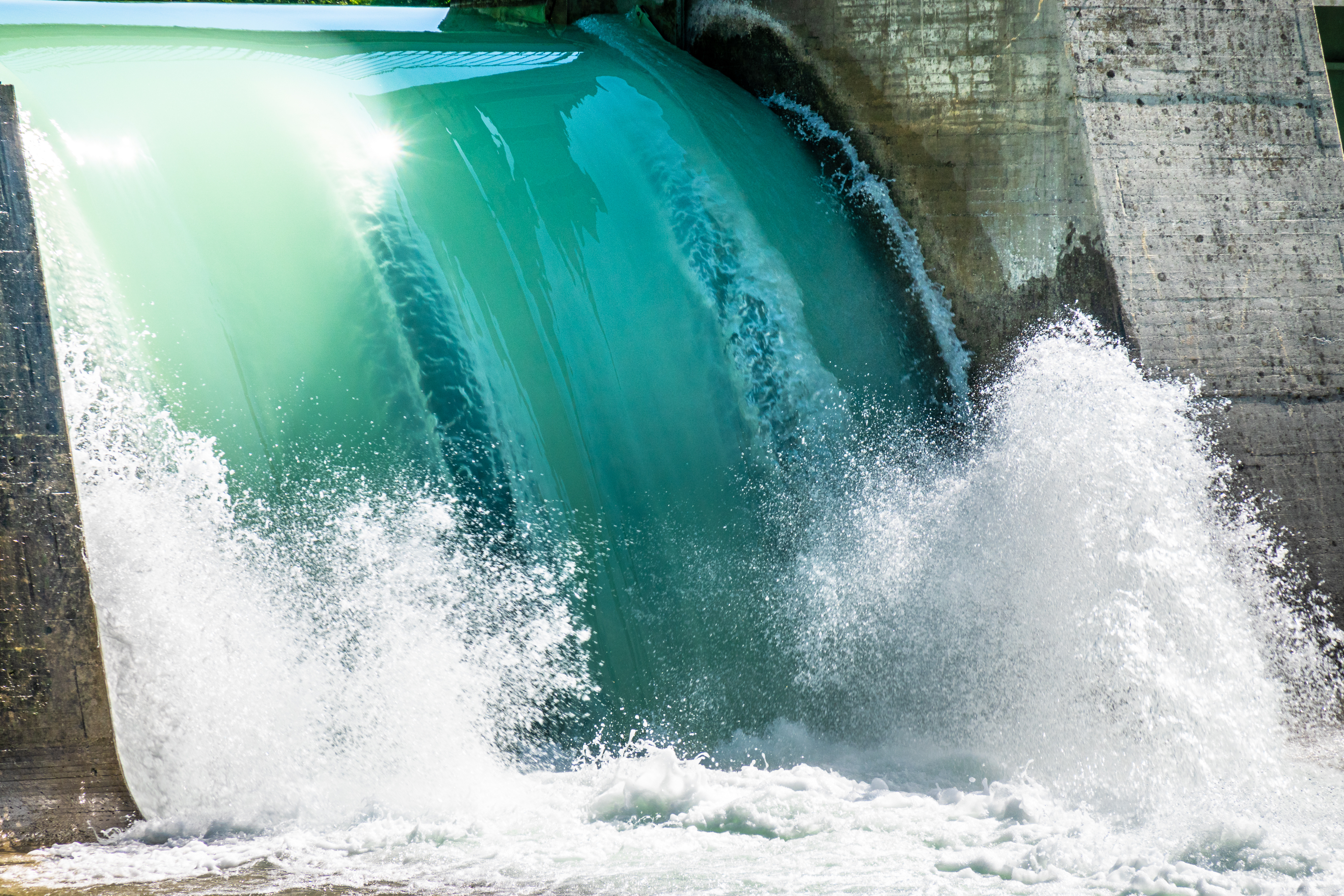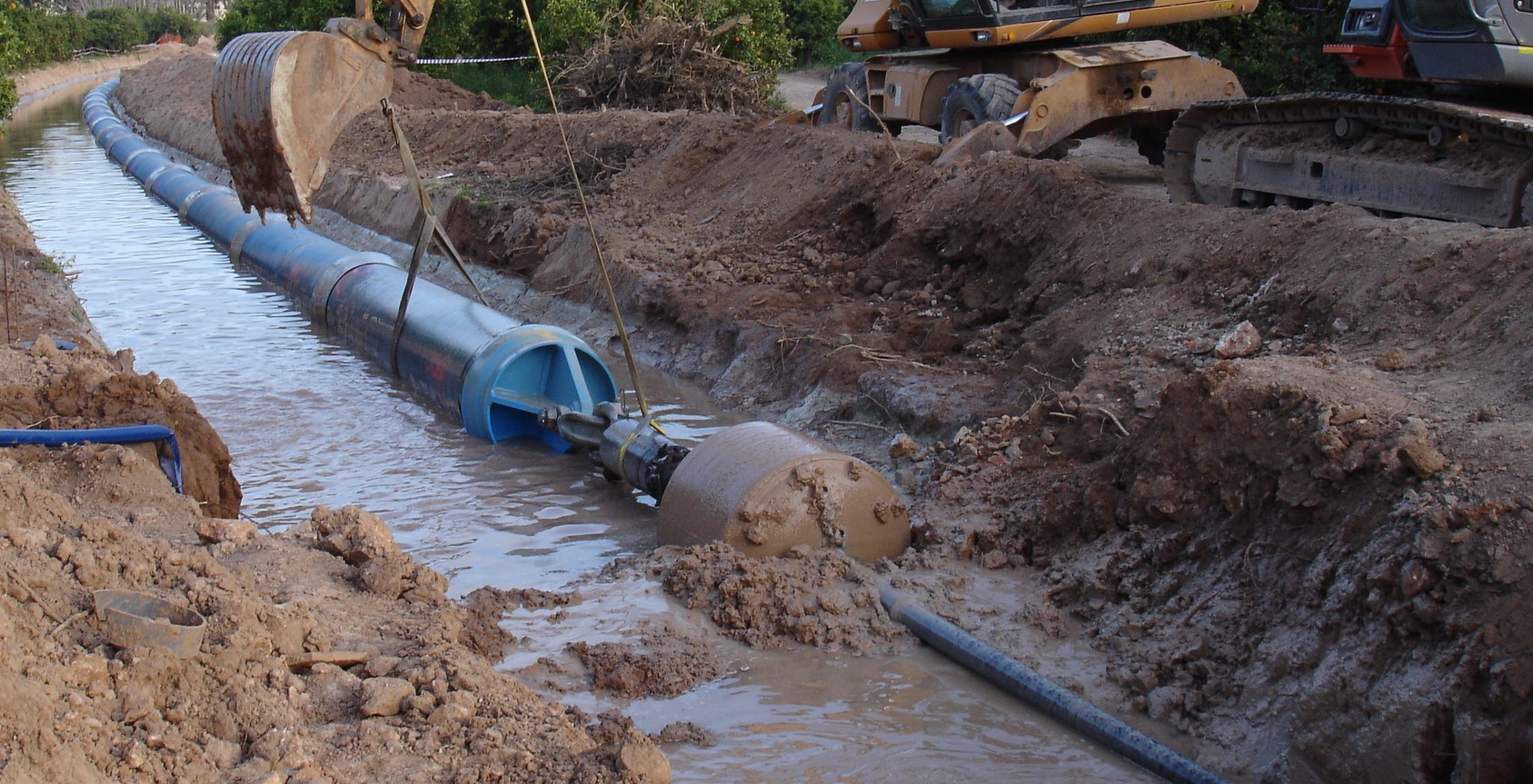Why is cement mortar applied as an internal protection against corrosion in ductile iron pipes?

Evolution of gray cast and ductile cast iron pipes: Protection against corrosive effects
The internal and external corrosion that may affect cast iron pipes, caused by the action of the water and the soil they are in contact, or the quality of the transported water, has historically been discussed over the years.
The first gray cast iron pipes were supplied with no coating or lining. There was soon evidence that the interior of the pipe was affected by different types of water, so the use of a bituminous lining protection was suggested. However, if the transported water was soft or acidic, it turned red – brown color, like the color of the acid, and a reduction in the available section of the pipe and therefore a decrease in the flow rate through the pipe was detected.

Tuberculización. (Industrial Fire World)
This effect is named “tuberculation”; a process where the corrosive water penetrates the pinholes of the bituminous protection causing rough mounds of rust that reduce the available flow section of the pipe and increases the roughness of the inside of the pipe thus increasing resistance to water flow.
So, it was a must to find a kind of lining capable to avoid this tuberculation process and improve the characteristics of the flow, so research with cement mortar as internal lining for pipes took place.
Cement-mortar lined ductile cast iron pipe

In 1922, the first cement-mortar lined gray cast iron pipes were installed in Charleston, South Carolina, USA.
Although the problem of the tuberculation was solved, the problems did not end there. Issues with soft water continued to appear as it was detected that the hardness and the pH of the water increased during the first months after water system commissioning.
With or without “Seal Coat”
The solution to mitigate the effects described above is the use of “Seal Coat”. According to the International Standard for the seal coat, ISO 16132: 2016 (Ductile cast iron pipes and fittings – Seal coats for cement mortar linings), the intended purpose of the seal coat is to reduce the contact between the cement mortar lining and the fluid transported inside the pipe, reducing the eventual transfer of inorganic materials in the water flow.
DIPRA (Ductile Iron Pipe Research Association), under AWWA in USA, has established the differentiation between cement mortar lining with or without “seal coat”, (sealing layer that prevents the increase of pH) according to the properties of water, generally used in cements with gypsum content, such as white cements. This type of cement is also known as “OPC” (Ordinary Portland Cement). This organization states that the scope of use of cement-mortar lined pipes and seal coat is from pH4 to pH12 for drinking water systems.
In the UK, Regulation 31 of The Water Supply (Water Quality) Regulations 2016, says that allowed linings, with or without seal coat, will not produce cement migrations that change the characteristics of the water.
Portland Cement
Unlike these Anglo-Saxon influenced markets (UK and USA), the seal coat is not a usual lining in Europe. The most popular lining is the portland cement mortar. Exceptionally for untreated raw water, or acid waters, the use of high alumina cement mortar lining is allowed (the scope of use of these types of cements is set out in the EN 545 and ISO 2531).
Conclusions
So the use of a cement mortar lining in a grey cast iron pipe (ductile cast iron pipe nowadays) intended to protect it versus the attack of the water carried; a protection that works as a chemical alliance between cement, iron and the water. Depending on the characteristics of the fluid, the requirements of this protection vary and therefore its behavior will be different.
Nowadays, we find special formulated cements for specific applications that face different problems. However, there are also mechanical protection coatings and linings that face these same problems with a different philosophy and that we will discuss in an incoming article
For further technical details about cement mortar lining benefits, please contact with info@construtec.com





